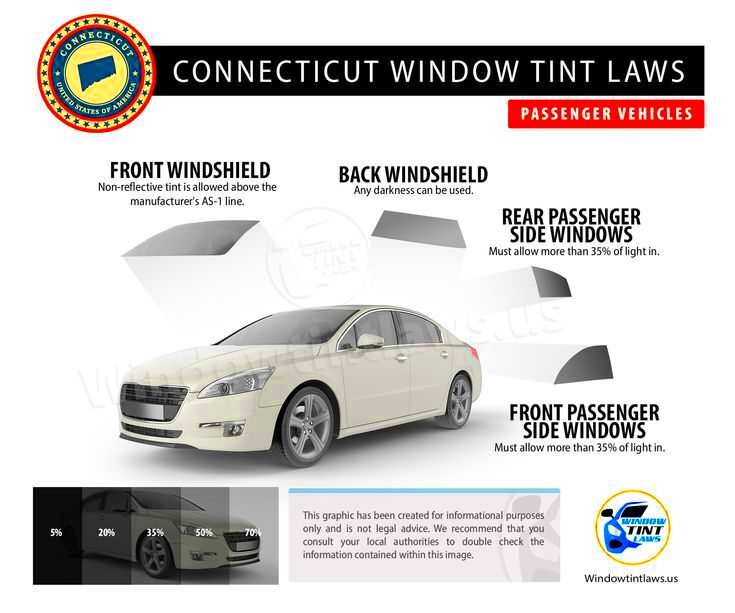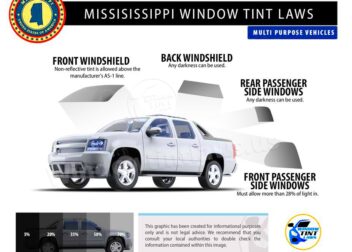Connecticut Window Tint Law and Compliance Guidelines
Connecticut’s window tint laws are designed to ensure that vehicle windows provide both privacy and safety without impairing the driver’s visibility. These laws set guidelines on how dark or reflective vehicle windows can be, depending on the type of vehicle. By following these regulations, vehicle owners can avoid fines and stay compliant with the law. If you’re considering tinting your windows or already have tinted windows, it’s important to know the specific limits set by the state.
How Connecticut Window Tint Law Regulates Vehicle Safety
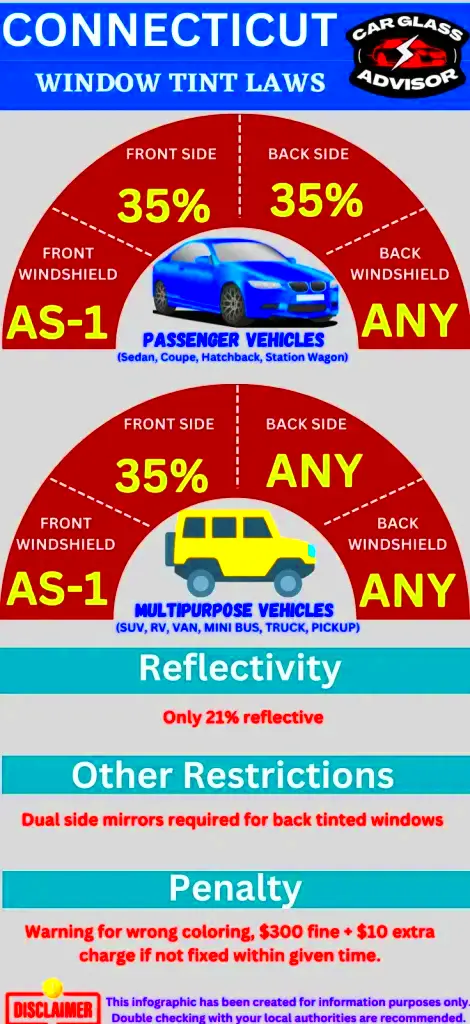
Window tinting, while offering privacy and heat reduction, can affect road safety if not properly regulated. The Connecticut Window Tint Law ensures that drivers have sufficient visibility to navigate roads safely, especially at night or during low-visibility conditions. The law prohibits extremely dark tints that can obscure a driver’s view of the road, pedestrians, or other vehicles. Here’s how it impacts vehicle safety:
- Visibility: Dark tints may reduce a driver’s ability to see clearly, particularly in poor lighting conditions. The law restricts how dark windows can be to avoid accidents.
- Protection for law enforcement: Clear windows help law enforcement officers see inside vehicles during traffic stops, enhancing their safety.
- Glare reduction: Tints help minimize glare from sunlight, which can otherwise cause distractions while driving.
Understanding Visible Light Transmission (VLT) Requirements in Connecticut
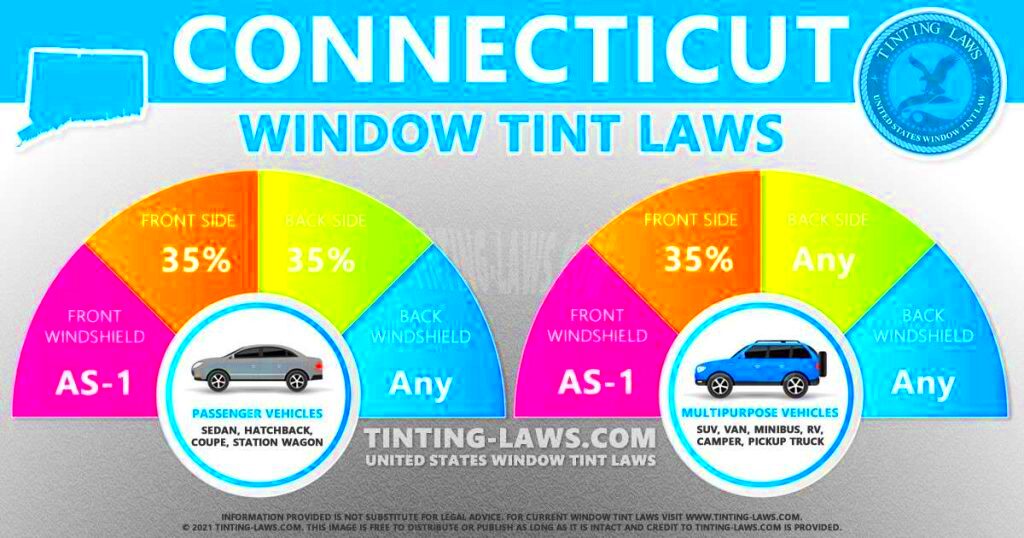
The key measurement for window tinting is Visible Light Transmission (VLT), which refers to the percentage of light that can pass through your windows. In Connecticut, different VLT levels apply depending on the type of vehicle and the window location.
VLT Requirements for Passenger Vehicles:
- Front Side Windows: Must allow at least 35% of light in.
- Rear Side Windows: Must allow at least 35% of light in.
- Back Window: Must allow at least 35% of light in.
VLT Requirements for Multi-Purpose Vehicles:
- Front Side Windows: Must allow at least 35% of light in.
- Rear Side Windows: No minimum VLT requirement.
- Back Window: No minimum VLT requirement.
Failing to meet these requirements can result in fines and the need to remove or adjust the tint to comply with state laws.
Types of Vehicles Covered by Connecticut Window Tint Law
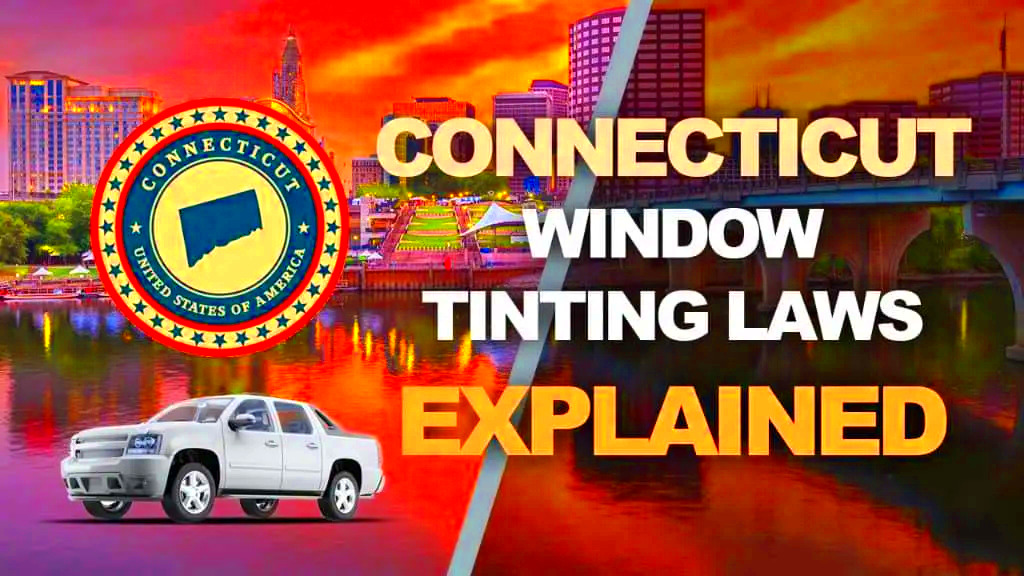
Connecticut’s window tint laws apply to different types of vehicles, each with its own set of requirements for window tinting. It’s important to know which category your vehicle falls into so you can follow the correct regulations. Generally, the law distinguishes between passenger vehicles, multi-purpose vehicles (SUVs, trucks, vans), and commercial vehicles. Understanding these distinctions helps you stay compliant.
Passenger Vehicles:
- Front Side Windows: Must allow at least 35% light in.
- Rear Side Windows and Back Window: Also must allow at least 35% light in.
Multi-Purpose Vehicles (SUVs, Trucks, Vans):
- Front Side Windows: Must allow at least 35% light in.
- Rear Side Windows and Back Window: No minimum VLT required, which means they can be darker than passenger vehicles.
Commercial Vehicles:
- These vehicles typically have specific guidelines depending on their use. For example, medical transport or government vehicles might have different allowances compared to standard commercial vehicles.
Different types of vehicles have varying levels of visibility requirements. Always check the specific requirements for your vehicle type to avoid issues during inspections or when being pulled over by law enforcement.
Exemptions and Special Conditions Under Connecticut Window Tint Law
Although Connecticut’s window tint law is strict, there are certain exemptions and special conditions that allow for more flexibility. These exemptions primarily address medical conditions and specific professional uses that require darker tints than normally allowed. It’s essential to know if you qualify for any of these exemptions and how to apply for them.
Medical Exemptions:
- Individuals with certain medical conditions may be allowed to use darker tints than typically permitted by law. Conditions such as lupus, photosensitivity, or other sun-related issues may qualify.
- To receive a medical exemption, a written certification from a licensed physician must be submitted. This certificate should clearly state the medical necessity for the darker tint.
Professional and Commercial Exemptions:
- Some vehicles used for specific professional purposes, such as law enforcement, government, or medical transport, may be permitted to have darker window tints.
- Vehicles transporting valuables (e.g., armored cars) may also be granted special exemptions for security reasons.
All exempted vehicles or individuals must have proper documentation readily available to show law enforcement if needed. Failure to carry proof of exemption can result in penalties.
Penalties and Fines for Non-Compliance with Connecticut Tint Regulations
Non-compliance with Connecticut’s window tint law can lead to various penalties, including fines and the requirement to remove or adjust the tint to meet legal standards. Understanding the potential consequences of non-compliance can save you from unnecessary costs and hassles.
Fines for Non-Compliance:
- First-time offenders can face fines ranging from $75 to $150.
- For repeat violations, the fines can increase significantly, with some reaching up to $300.
- If your vehicle fails inspection due to illegal tint, you may be required to remove or modify the tint and pass a re-inspection.
Other Consequences:
- Failure to comply with the law could result in your vehicle being stopped more frequently by law enforcement.
- Non-compliant vehicles may also be subject to vehicle inspection failure, which could delay registration renewal.
Ensuring your vehicle meets the state’s window tint requirements will not only keep you on the right side of the law but also avoid these fines and penalties in the long run.
Steps to Ensure Compliance with Connecticut Window Tint Law
Staying compliant with Connecticut’s window tint laws involves understanding the specific regulations for your vehicle and taking steps to ensure that your tint is within legal limits. By following the right process, you can avoid fines and keep your vehicle in line with the state’s safety standards.
1. Check Your Vehicle’s Tint Level:
- Use a tint meter to measure the Visible Light Transmission (VLT) of your windows. Ensure that your front side windows allow at least 35% of light in, and check the requirements for your rear side and back windows based on your vehicle type.
- If you’re unsure, visit a certified inspection station where professionals can measure the VLT and confirm compliance.
2. Choose a Certified Tinting Professional:
- If you’re planning to tint your windows, make sure to go to a licensed and certified professional who understands Connecticut’s tint laws. Certified professionals are more likely to install tints that meet state regulations.
- Request documentation from the installer showing the VLT percentage of the tint applied.
3. Keep Documentation Handy:
- If you have a medical exemption for a darker tint, keep a copy of the exemption certificate in your vehicle at all times.
- This ensures you can provide proof to law enforcement during traffic stops or inspections.
4. Schedule Regular Inspections:
- Even if your tint complies now, window films can wear down over time and alter the VLT percentage. Scheduling periodic checks can help you stay within legal limits.
Following these steps will ensure your vehicle remains compliant with Connecticut’s tinting laws and help you avoid unnecessary fines or penalties.
Conclusion on Staying Compliant with Connecticut Window Tint Regulations
To remain compliant with Connecticut’s window tint law, it’s essential to understand and regularly review the specific tint requirements for your vehicle. Whether you own a passenger car, an SUV, or a commercial vehicle, knowing how much light your windows need to let in is crucial for both safety and legal purposes.
Make sure to work with licensed professionals when installing window tints, and always carry any necessary documentation, such as medical exemption certificates, if applicable. Staying up to date on any changes in the law and having your windows inspected periodically will help keep you compliant and avoid potential fines.
In the end, adhering to these guidelines is not only about avoiding penalties but also about ensuring road safety for yourself, passengers, and others around you. Compliance is simple when you know the rules and take proactive steps to follow them.
Frequently Asked Questions
1. What is the legal limit for window tint in Connecticut?
For passenger vehicles, the front and rear side windows must allow at least 35% of light in. For multi-purpose vehicles, the front side windows must allow at least 35%, but there are no VLT limits for the rear side and back windows.
2. Can I get a medical exemption for darker window tints?
Yes, individuals with certain medical conditions, such as those sensitive to sunlight, can apply for a medical exemption. You will need a written certificate from a licensed physician stating the necessity for darker tints.
3. What happens if my window tint doesn’t comply with the law?
Non-compliance can result in fines ranging from $75 to $300, depending on whether it’s your first offense or a repeat violation. Additionally, you may be required to remove or adjust your window tint to meet legal standards.
4. How do I measure the tint on my windows?
A tint meter can be used to measure the Visible Light Transmission (VLT) of your windows. Many auto shops or inspection stations offer tint measurement services to help ensure compliance with state law.
